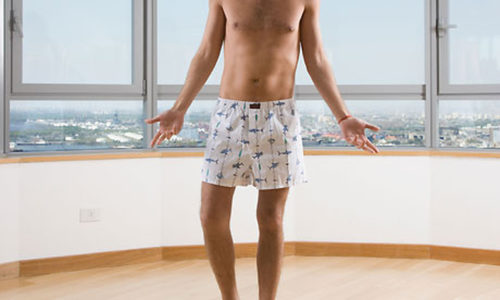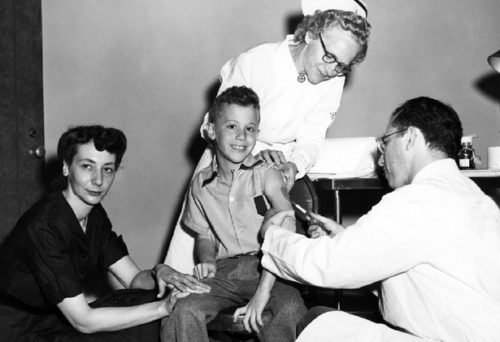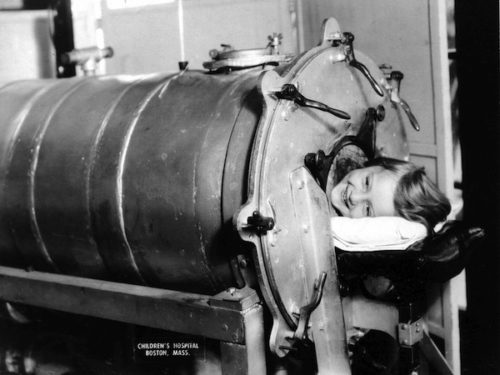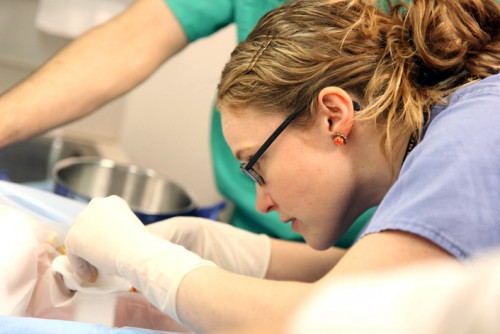In the U.S., old Ben Franklin published a series of articles in his Old Richard’s Almanac which, even if he didn’t come out right and say it, people took as the truth and became Medical Proverbs still with us today.
Perhaps it’s because a lot of these medical proverbs had their roots in vintage manuscripts like the bible and early writings of the pioneering healers/doctors throughout time.
How about it? Should we take sayings like: “early to bed…”, “an apple a day…”, “pay attention to seasons…”, “doctors’ best book is the patient”, “health checks don’t add anything meaningful…”, “eight glasses of water…”, “cold hands…”, “cigarettes stunt your…” and “feed a cold…” as truth or with a huge grain of salt?
Let’s do some proverb-busting!
4 Posts in "Proverbs" Series
- Proverbs Series: Intro/Index – 1 Oct 2018
Vintage medical proverbs: are they true or, like some, just "old wives' tails?"
- Heart, fever, smoking, water and apples – 6 Oct 2018
"An apple a day," "cold hands, warm heart," "feed a cold, starve a fever." and "cigarettes stunt your growth" are all medically related proverbs (myths)—are they true? This curated series of posts all deal with proverbs of a kind, which are explored and declared either "confirmed" or "busted."
- Seasons, patient learning, remedies, eating and health checks – 1 Dec 2018
This post continues our exploration of medical proverbs only now let us turn our attention to doctors and what they do. Are physical exams really necessary anymore? Should doctors really pay attention to the seasons? In true Mythbuster fashion, let's confirm or bust them.
- sleep and health – 18 Feb 2019
Previous posts have discussed medical proverbs but there is one glaring omission that needs to be addressed: does "early to be and early to rise REALLY make you healthy, wealthy and wise"?
[I have to tell you, this article about boy’s underwear in puberty has been an interesting one to write. Mostly because I usually write about documented recommendations with scientific support and this topic is pretty much a collection of known, assumed and extrapolated suggestions from information in areas sometimes only tangentially related. Therefore it still leaves a lot of room for personal preference]
I answered a question of a 16 year-old patient who had been the subject of some school-girls’ highly personal and intrusive questioning: “What kind of Underwear do you wear? boxers, briefs or commando?” He wrote into an answer-line: “Which is best?” and I told him I’d think about it and see if there was an informed answer that covered all the Tanner Stages.
Read more →
Assessing Children’s Health and Fitness
The “bleep” test, the “beep” test, the “Multistage Fitness Test” (MSFT)
The test had its beginnings in Britain to quantify the fitness level of children and sports team participants. Its popularity has grown world-wide and it is now used by major league teams as a requirement of participation, not to mention military units, the FBI, schools and other venues where fitness is a job requirement. Many other “clones” of the test have been developed (such as the yo-yo test) but all of them are pretty much the same measurement of the body’s ability to utilize oxygen and get it to its cells.
For those of you who wish to have a copy of the test to use in your family, an MP3 file is downloadable below.
The “game” or “exercise” is easy to set up and just as easy to perform (except for the running part) but it does need some explanation to those you want to administer it to. The tape uses “beeps” to time the exercise. You start the tape and don’t stop it until the last person taking the test has dropped out. Ostensibly to the highest level it takes just over 20 minutes; but no one has been verified as completing it even though several have claimed to do so. Most fit individuals reach their maximum around 10 minutes, only professional level athletes make it above level 12 or so (there are 21).
Give the instructions, start the tape, wait for the first set of three beeps and runners begin at a pace “just fast enough” to arrive at the cone where they wait until the next beep sounds and they start back. They run back and forth at the same pace waiting at the end for the next beep until another series of three beeps indicate the “next level” and the pace picks up. So, it’s back and forth to the time of single beeps until three beeps announces the next level of faster pace.
The “players” continue until maximal effort is reached with encouragement from the onlookers. The idea is to keep going until they have been “late for the beep” two times in a row and their score becomes the last level that they reached on time. Everyone in the family will be different and playing the game will improve both the score and fitness. Here is a video of a college professor teaching students how to administer the test.
So, what to expect at the various ages for “fitness?” Barring preclusive physical impairments here are the charts for boys and girls 9 through 17. Children younger than nine can run to the beeps but really shouldn’t do so under pressure. Developing a love for how their bodies feel when they’re fit and active should be the FIRST agenda. Nine is early enough to begin the challenge of competing with one’s self for improvement as the SECOND agenda. Physical competition against others should be left for sometime AFTER 12 as the THIRD agenda.
PERFORMANCE AT AGE LEVELS
Boys
| Percentile |
< 5 |
5-20 |
20-40 |
40-60 |
60-80 |
80-95 |
>95 |
| Age |
very poor |
poor |
fair |
average |
good |
very good |
excellent |
| 9 |
< 2/2 |
2/2-3/4 |
3/5-4/4 |
4/5-5/4 |
5/5-6/4 |
6/5-7/7 |
> 7/7 |
| 10 |
< 2/2 |
2/2-3/5 |
3/6-4/5 |
4/6-5/5 |
5/6-6/6 |
6/7-8/1 |
> 8/1 |
| 11 |
< 2/2 |
2/2-3/6 |
3/7-4/7 |
4/8-5/8 |
5/9-6/10 |
7/1-8/6 |
> 8/6 |
| 12 |
< 2/2 |
2/2-3/8 |
4/1-5/1 |
5/2-6/4 |
6/5-7/6 |
7/7-9/3 |
> 9/3 |
| 13 |
< 2/4 |
2/4-4/2 |
4/3-5/6 |
5/7-6/9 |
6/10-8/3 |
8/4-10/1 |
> 10/1 |
| 14 |
< 2/6 |
2/6-4/5 |
4/6-6/1 |
6/2-7/4 |
7/5-8/9 |
8/10-10/9 |
> 10/9 |
| 15 |
< 2/7 |
2/7-4/7 |
4/8-6/3 |
6/4-7/7 |
7/8-9/2 |
9/3-11/3 |
> 11/3 |
| 16 |
< 2/8 |
2/8-4/9 |
5/1-6/6 |
6/7-7/10 |
8/1-9/6 |
9/7-11/8 |
> 11/8 |
| 17 |
< 3/1 |
3/1-5/2 |
5/3-6/8 |
6/9-8/3 |
8/4-9/9 |
9/10-12/1 |
> 12/1 |
Girls
| Percentile |
< 5 |
5-20 |
20-40 |
40-60 |
60-80 |
80-95 |
>95 |
| Age |
very poor |
poor |
fair |
average |
good |
very good |
excellent |
| 9 |
< 2/2 |
2/2-3/1 |
3/2-3/8 |
4/1-4/6 |
4/7-5/4 |
5/5- 6/6 |
> 6/6 |
| 10 |
< 1/7 |
1/7-3/1 |
3/2- 3/8 |
4/1-4/7 |
4/8-5/6 |
5/7- 6/8 |
> 6/8 |
| 11 |
< 1/6 |
1/6-2/8 |
3/1- 3/8 |
4/1-4/8 |
4/9-5/8 |
5/9-7/1 |
> 7/1 |
| 12 |
< 1/5 |
1/5-2/8 |
3/1-4/1 |
4/2-4/9 |
5/1-5/9 |
6/1-7/3 |
> 7/3 |
| 13 |
< 1/5 |
1/5-3/1 |
3/2-4/1 |
4/2-5/1 |
5/2-6/1 |
6/2- 7/5 |
> 7/5 |
| 14 |
< 1/5 |
1/5-3/1 |
3/2-4/1 |
4/2-5/1 |
5/2-6/2 |
6/3- 7/6 |
> 7/6 |
| 15 |
< 1/5 |
1/5-3/12 |
3/2-4/2 |
4/3-5/2 |
5/3-6/3 |
6/4-7/7 |
> 7/7 |
| 16 |
< 1/5 |
1/5-3/1 |
3/2- 4/2 |
4/3-5/2 |
5/3-6/3 |
6/4-7/8 |
> 7/8 |
| 17 |
< 1/5 |
1/5-3/1 |
3/2-4/2 |
4/3-5/3 |
5/4-6/4 |
6/5- 7/9 |
> 7/9 |
Finally, if you’re still with me, here is a summary chart of the entire test levels and shuttles on each level. It shows the relative speed the child is running (km/h) at each level as well as times and distances.
TEST SUMMARY INFORMATION

Your grandparents and great-grandparents are always the shortest ones in all your family photos, right? It’s the same with all of us.
Your kids are taller, better fed and wealthier than your grandparents; so, why are today’s children LESS healthy than 50 years ago? Children’s health has actually gotten worse!
Read more →
Here we are, in our discussion about immunization, at the ten reasons parents don’t immunize their children as described by a colleague, Greg Barrett at Ohio State University School of Medicine.
He did something that very few pediatricians these days are willing to do: immerse himself in the wasteful false rhetoric in order to understand the dilemma the patients he cared about were in. This article is for those who are truly looking for answers (Vaccine-haters, this is not for you).
Read more →
We’re (by that I mean I and I’m dragging you along with me) trying to make sense of and understand this mess we’re in about immunization; and I’m telling you of how a colleague decided to deliberately immerse himself in the vaccine-hater cottage industry to try and understand how otherwise seemingly rational parents make decisions which are clearly not in the best interest of their children.
Read more →
If you’re like me, all this hysteria about immunizations is a bit hard to comprehend let alone understand. My very early memories concerning health were about friends and classmates becoming crippled and dying of polio and mumps and measles and whooping cough!
I remember taking cans around to collect “pennies by the inch” and news stories about children all over the nation sending dimes to the president and the “children’s March of Dimes.” Why were we so fearful, so troubled, so united, so focused? Were we all stupid? Deluded? Conned? Was it all a myth?
Read more →
One of several “most interesting” aspects of medical school for my graduating class was had in the psychiatry department when they taught us the science behind and techniques for hypnosis; or, as I’ve heard others refer to it: selective relaxation or meditation. This article is not about yoga per-se but about its usefulness in aiding meditation or relaxation.
I’ve been asked about and used clinical hypnosis (markedly different than “stage hypnosis”) on a few selective patients with uniformly favorable results; I’ve taught a whole lot more patients the techniques of selective relaxation.
Read more →
I had a friend post an article on his blog about how to cope with tinnitus. He’s not a medical person but has intimate knowledge of the problem from the standpoint of what actually works, and he discussed how meditation helps him.
I communicated with him a little about it and told him that I’d been working on a post about meditation for this blog for about two years. Actually, it’s been sitting in the “possibles” pen for that long, awaiting a bump into production.
Read more →
The slogan “Back to Sleep” which revolutionized infant sleep methods has been changed to “Safe To Sleep” to broaden its scope and bring other causes of sleep-related infant death “into the fold” for research. Perhaps you already knew that, the slogan has been registered as a trademark of the US Department of Health and Human Services.
Read more →
I’m not sure how to write about some new research on infant circumcision because I am aware that the subject has seemed to develop sort of a cult of non-believers not dissimilar to that of the non-immunizers.
Read more→
Here is a link to an article for teens about sexual attraction and orientation and it’s printable. A good read for parents as well. It’s tremendously important that each teen finds a “confidant.”
[ http://kidshealth.org/PageManager.jsp?dn=KidsHealth&lic=1&ps=207&cat_id=20016&article_set=50685 ]
:












